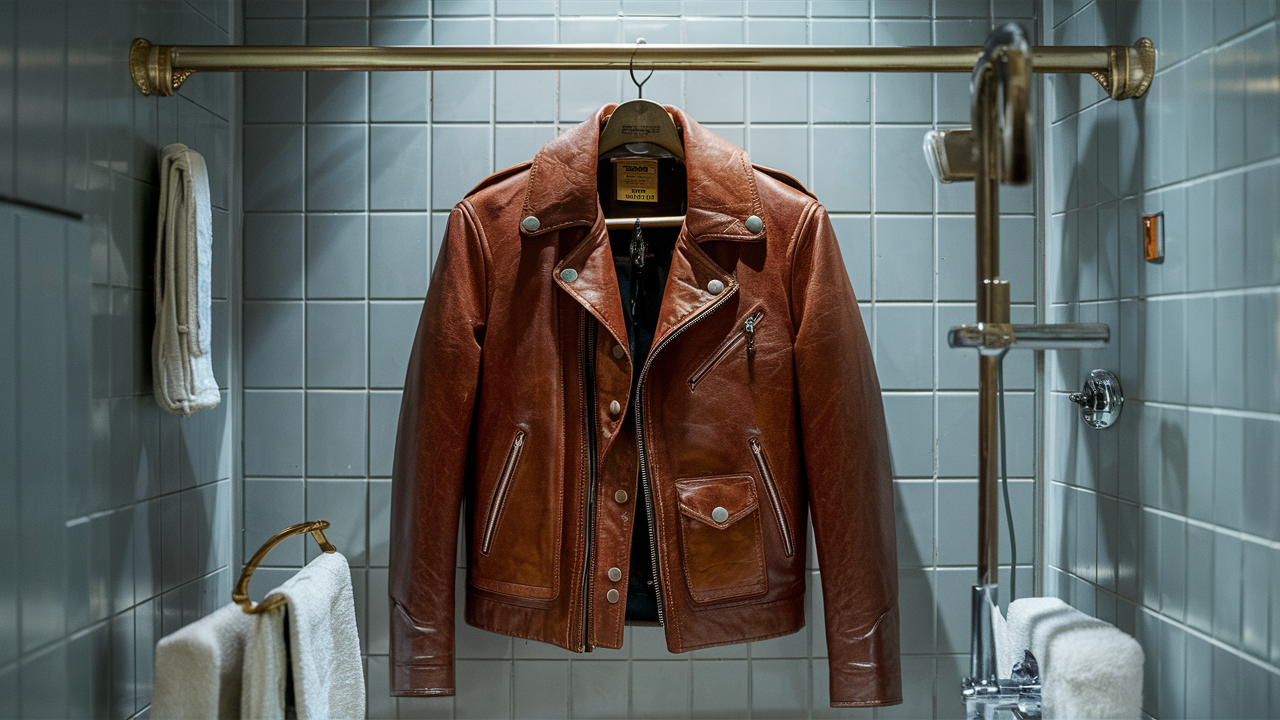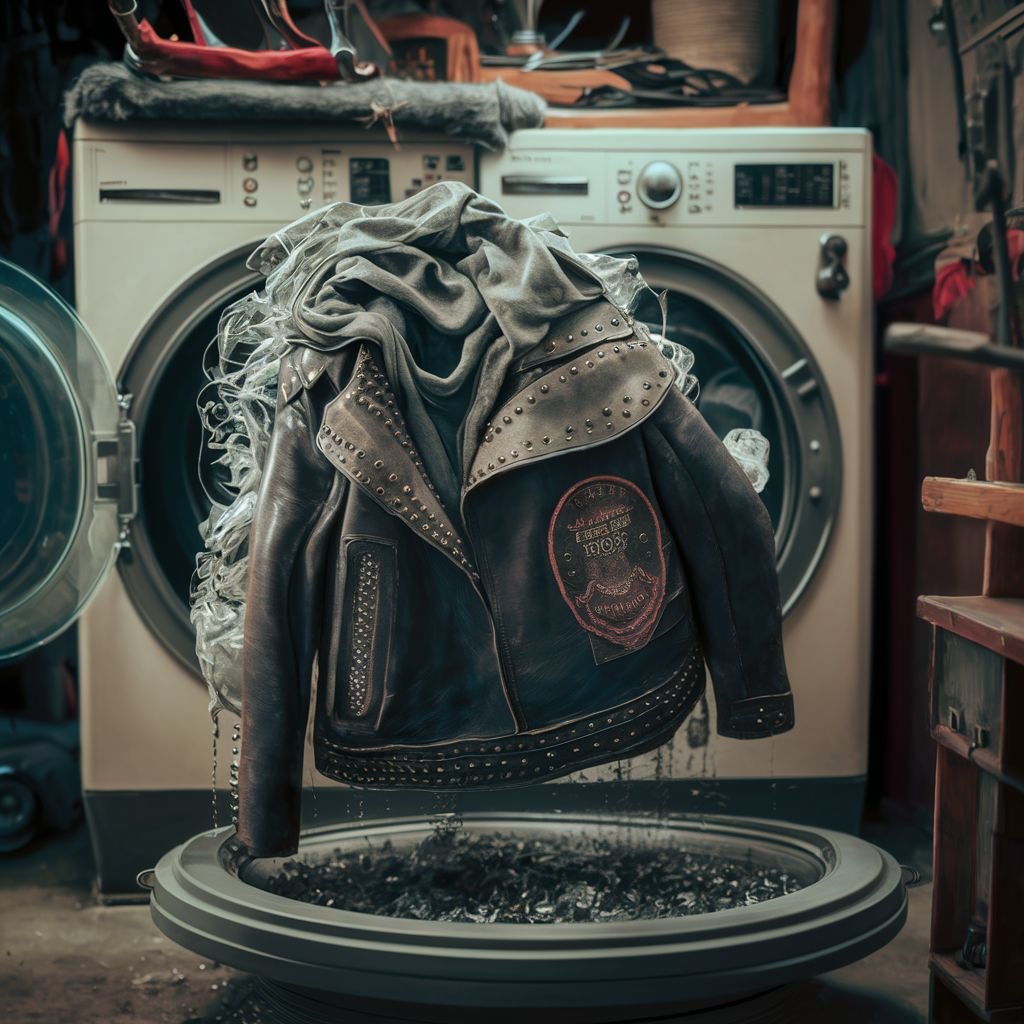The Art of Shrinking a Leather Jacket: A Comprehensive Guide
Leather jackets are timeless pieces that add an edge and character to any wardrobe. However, finding the perfect fit can be a challenge, and over time, even the best-fitting leather jackets can start to feel a bit loose. Whether you’ve lost weight or inherited a vintage piece that’s a tad too large, you might find yourself wishing for a snugger fit. Before you consider giving it away or investing in alterations, you might want to try shrinking your leather jacket at home. Here’s how to do it safely and effectively.
Understand the Risks
Before you proceed, it’s crucial to understand that shrinking leather is risky and can lead to damage if not done carefully. Leather is a natural material that can become dry, brittle, and cracked if mishandled. Always start with the least invasive method and only proceed if you’re willing to accept some level of risk.
Tips for Success
- Always patch-test any method on a small, inconspicuous area of the jacket first.
- Never use a hairdryer, radiator, or direct sunlight to speed up the drying process, as high heat can damage leather.
- Consider the lining of your jacket. If it’s made of a different material, it might shrink at a different rate than the leather, causing bunching or distortion.
- Understand that some leather finishes may react poorly to water. Suede, nubuck, or extremely soft leathers are particularly vulnerable to water damage.
Now let’s move towards the main topic.
Methods To Shrink A Leather Jacket
Let’s dive deeper into each method for shrinking a leather jacket, including the risky method of using a washing machine. Remember, each method carries its own set of risks and should be approached with caution and consideration for the value of the jacket.

Method 1: Water and Natural Drying
1. Wet the Jacket More Evenly
Use a clean spray bottle filled with lukewarm water to mist the jacket. Ensure the jacket is laid flat on a clean surface and spray evenly, targeting the areas you wish to shrink but avoiding saturation. If you don’t have a spray bottle, a damp cloth can be gently patted over the jacket to achieve a similar effect.
2. Dry It Naturally with Care
Find a well-ventilated area away from direct sunlight and heat sources. Direct sunlight can cause uneven drying and fading, while heat can damage the leather. A cool, dry place allows the leather to contract naturally as it dries. Rotate the jacket periodically to ensure even drying on all sides.
3. Condition Thoroughly
Once the jacket is completely dry, it’s crucial to use a high-quality leather conditioner. Apply it evenly across the leather’s surface with a soft cloth, using circular motions. This restores moisture lost during the drying process and helps to keep the leather supple. Allow the conditioner to absorb and gently buff any excess off with a clean cloth.

Method 2: The Shower Steam Technique
1. Utilize Steam Wisely
The key here is to expose the jacket to steam without making it wet. Hang the jacket on a sturdy hanger in the bathroom while taking a hot shower. Close the windows and doors to trap the steam. The jacket should be hung far enough away from the shower to avoid direct water contact. The aim is to soften the leather with steam, making it more pliable and ready for natural shrinking.
2. Natural Drying Strategy
Post-steaming, move the jacket to a dry, ventilated area. As it dries, gently stretch and manipulate areas like the sleeves or waist if you’re aiming for a more tailored fit in specific sections. This method allows for more control over the shrinking process, as the leather has been softened but not saturated.
3. Deep Conditioning
After the jacket is dry, conditioning is again essential. Leather that has been exposed to steam can lose its natural oils. A thorough conditioning treatment will ensure the jacket remains flexible and vibrant. Focus on areas that tend to dry out more, such as seams and folds.
Method 3: Professional Leather Tailoring
If you’re hesitant to risk water exposure, the safest and most effective way to shrink a leather jacket is to take it to a professional tailor who specializes in leather. They can often make alterations that preserve the jacket’s look and fit without the need for risky DIY methods.
1. Consultation
Find a tailor experienced with leather. During the consultation, be clear about your expectations and listen to their professional advice. They can provide insights into how much the jacket can be taken in without compromising its style or integrity.
2. Tailoring Process
Professional tailoring might involve taking measurements, marking the jacket, and then carefully altering it. The tailor might open seams, remove excess material, and then re-sew the jacket for a closer fit. This method doesn’t technically shrink the jacket but provides a tailored fit that can often be more precise and less risky than attempting to shrink the leather itself.

Method 4: Washing Machine (High Risk)
1. Prepare Your Jacket
Empty all pockets and close all zippers and buttons to prevent damage. It’s wise to place the jacket in a mesh laundry bag or pillowcase to offer some protection against the agitation.
2. Washing Machine Settings
- Set your washing machine to a gentle, cold water cycle. Cold water is less likely to cause extreme shrinkage and reduces the risk of the leather becoming too stiff.
- Avoid using detergent, as chemicals can harm the leather. If you feel the need to use something to help clean the jacket, opt for a small amount of gentle, leather-safe cleaner.
3. Start the Wash
Proceed to wash the jacket, keeping in mind that this step is irreversible and can significantly alter the jacket’s texture, color, and size.
4. Drying:
Once the cycle is complete, remove the jacket immediately to prevent it from staying wet longer than necessary. Gently stretch and shape the jacket to prevent it from shrinking too much in unwanted areas.
Allow it to air dry naturally, away from direct heat and sunlight. Hang it on a broad hanger to help maintain its shape. Do not use a dryer, as the heat can cause the leather to shrink unevenly and become hard.
5. Conditioning
After the jacket is completely dry, it’s crucial to apply a leather conditioner. This step helps to restore some of the oils lost during the washing process, keeping the leather supple and preventing it from becoming brittle.
Additional Considerations
- Be prepared for potential changes in the jacket’s texture and color. The leather may become stiffer and its color might fade or become uneven.
- The internal lining of the jacket, if any, may shrink at a different rate than the leather, potentially leading to a misshapen garment.
- There is always a risk that the jacket may shrink too much, becoming unwearable.
Conclusion
Each method for shrinking a leather jacket has its own set of risks and potential rewards. From natural drying techniques to professional tailoring, or even the drastic measure of using a washing machine, the choice depends on how much risk you’re willing to take with your leather garment. Remember, consulting with a professional leather expert before attempting any dramatic DIY solutions can save you from irreversible damage to a cherished piece.
